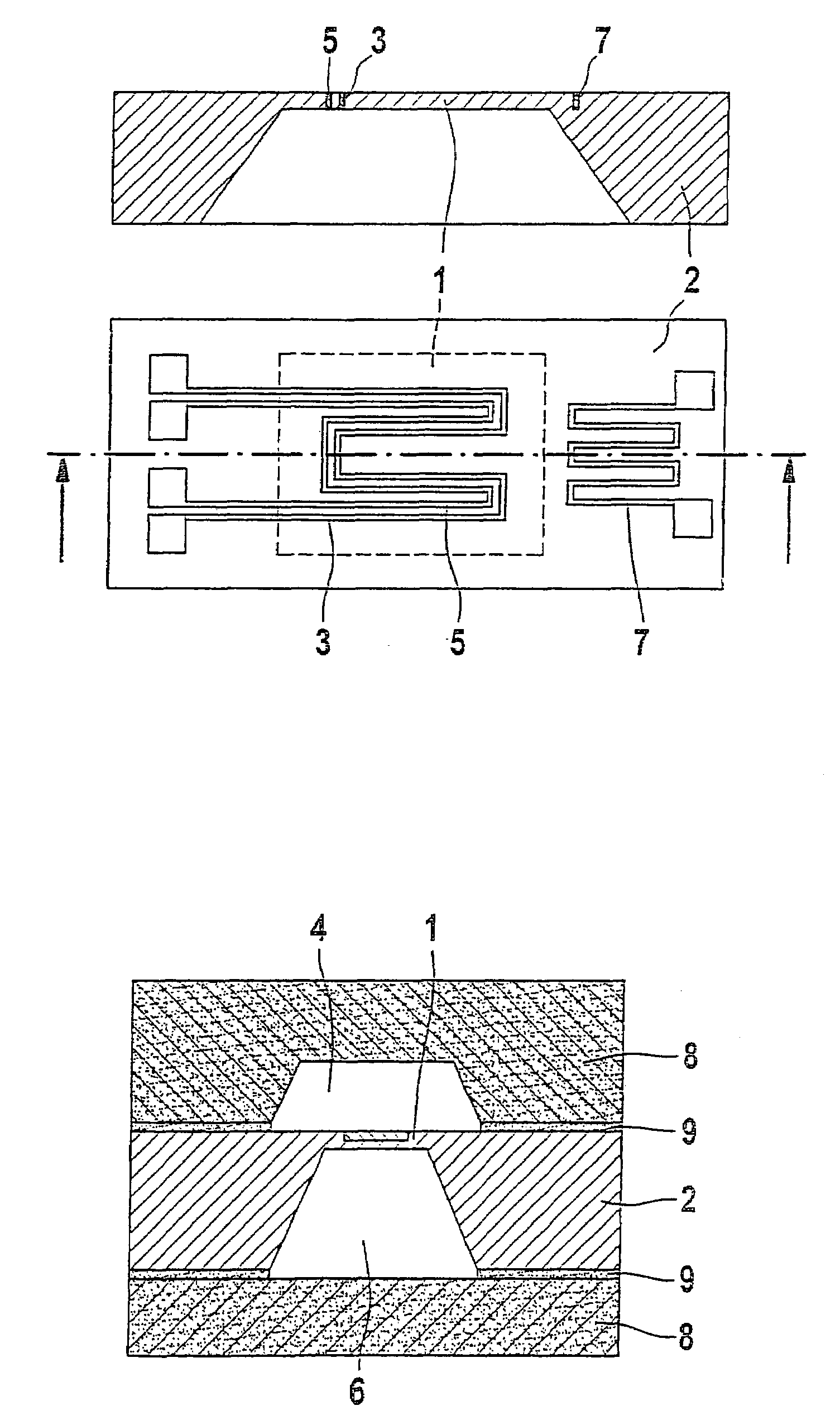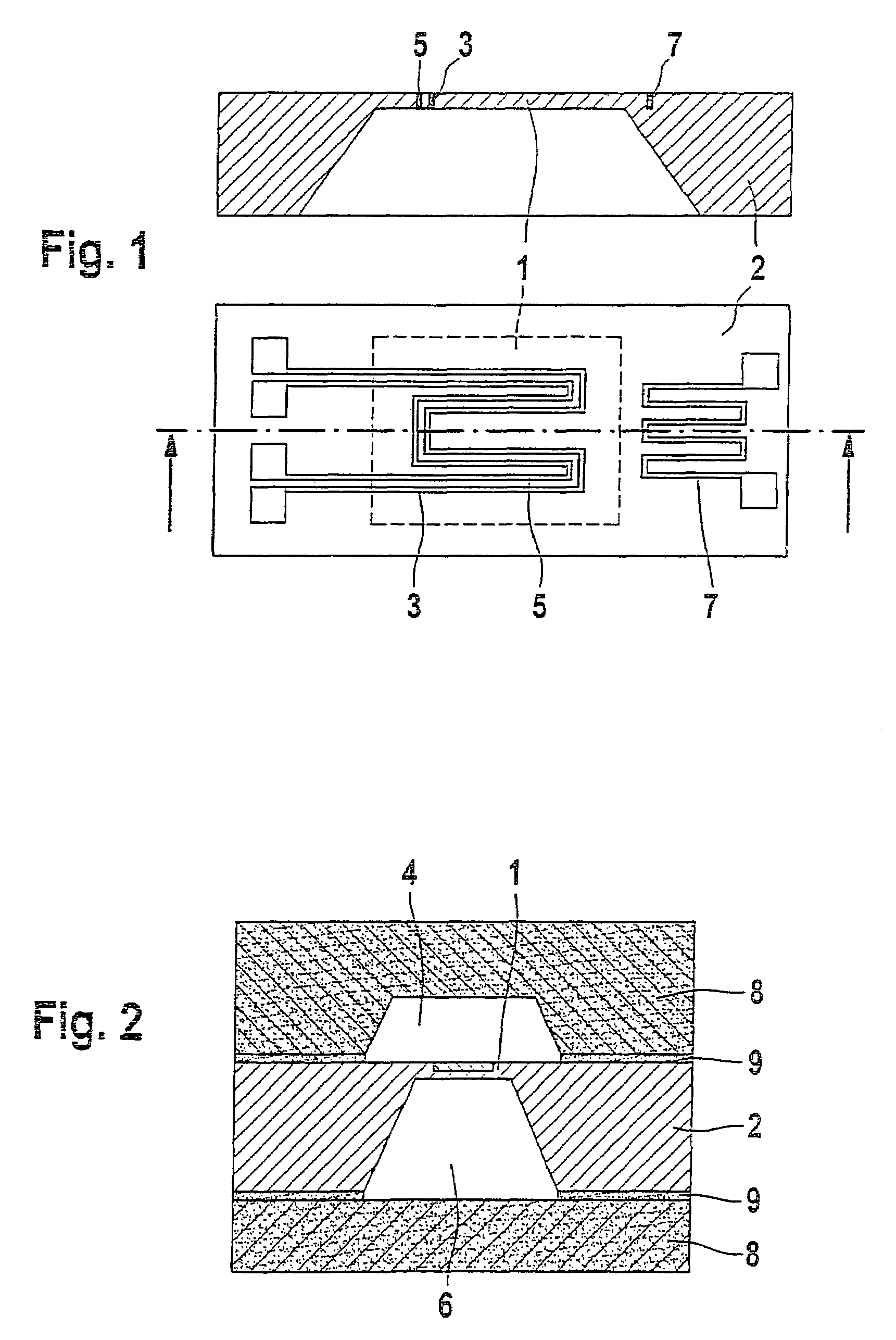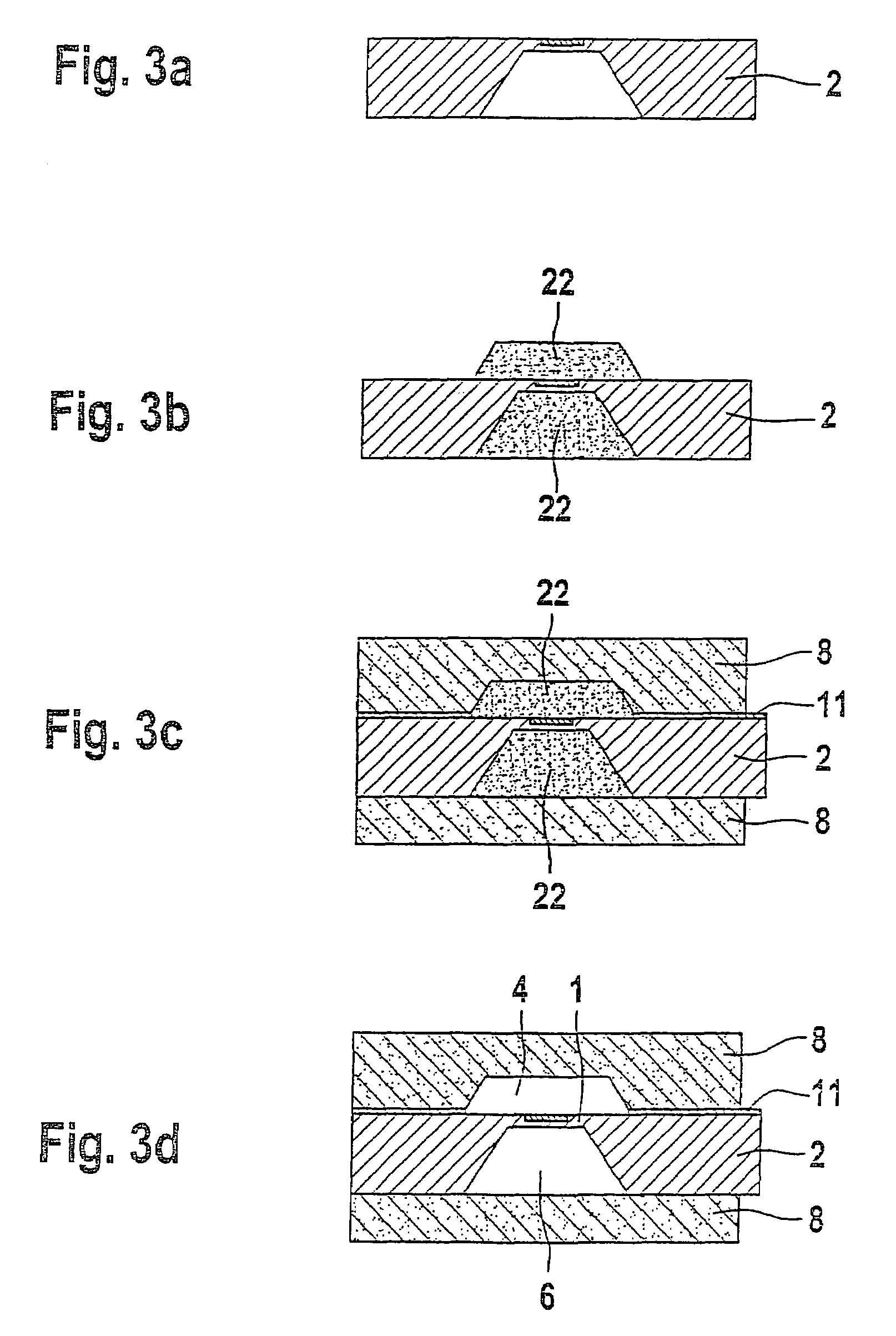Micromechanical thermal-conductivity sensor having a porous cover
a micro-mechanical and thermal-conductivity sensor technology, applied in the field of micro-mechanical thermal-conductivity sensors, can solve the problems of falsification of the actual thermal-conductivity value, short response time (time constant) of the miniaturized sensor, and general only achievable results
- Summary
- Abstract
- Description
- Claims
- Application Information
AI Technical Summary
Benefits of technology
Problems solved by technology
Method used
Image
Examples
Embodiment Construction
[0032]As the lower part of FIG. 1 shows, in a typical conventional micromechanical thermal-conductivity sensor, a heating element (resistance element) 3 in the form of a Pt-resistance wire and a temperature-dependent electrical resistor 5 for detecting diaphragm temperature TM are arranged in a meander form on silicon base plate 2 and diaphragm 1, respectively. Located outside of diaphragm 1 is a further temperature-dependent electrical resistor 7 for detecting ambient temperature TU. Base plate 2, together with the applied electrical structures, forms a silicon sensor chip for measuring the thermal conductivity. In the upper part of FIG. 1, it can be seen that diaphragm 1 is formed as a recess in base plate 2.
[0033]To measure the thermal conductivity of the surrounding gas or gas mixture, for example, the heating power of the heating element needed to keep the difference between TM and TU constant is determined. Because of the small mass of the thin diaphragm and the materials appl...
PUM
| Property | Measurement | Unit |
|---|---|---|
| thickness | aaaaa | aaaaa |
| depth | aaaaa | aaaaa |
| thickness | aaaaa | aaaaa |
Abstract
Description
Claims
Application Information
 Login to View More
Login to View More - R&D
- Intellectual Property
- Life Sciences
- Materials
- Tech Scout
- Unparalleled Data Quality
- Higher Quality Content
- 60% Fewer Hallucinations
Browse by: Latest US Patents, China's latest patents, Technical Efficacy Thesaurus, Application Domain, Technology Topic, Popular Technical Reports.
© 2025 PatSnap. All rights reserved.Legal|Privacy policy|Modern Slavery Act Transparency Statement|Sitemap|About US| Contact US: help@patsnap.com



